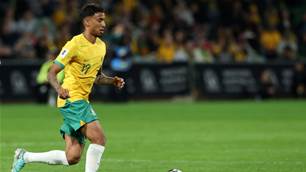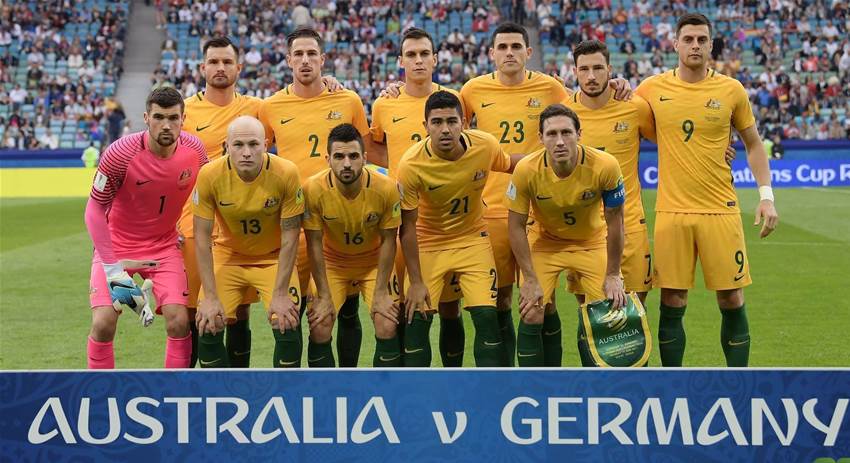The Socceroos paid the price for a costly first-half performance, with Germany winning 3-2 and starting their Confederations Cup campaign with a win.
Australia’s improved second half performance
During the break, Postecoglou brought on Robbie Kruse for Massimo Luongo and moved Aaron Mooy to a deeper position. This proved to be a game-altering change, as the performance of the Socceroo’s greatly improved in the second half.
There were a number of factors that affected the change in performance, but the increased control of Sebastian Rudy was key. As explained above, Rudy was vital to all aspects of the German’s play in the first half, and the plan put in place at half-time to shut him down paid dividends throughout the rest of the match.
With this came a change in the way that Australia were pressing from the front, reverting to the more intense method shown against Brazil where Juric forced the ball wide for the second line of pressure to defend against the line.
In doing so, Australia were able to influence the play away from Rudy. As a contingency, the ball-far attacking midfielder man-marked the German playmaker in order to ensure that he would not have the time or space to dictate the game if he received the ball.
This defensive approach led to regular turnovers from a German team who had played so assuredly in the first half, which eventually forced a tactical change from Joachim Loew.

In order to combat the Australian press, Loew changed the German setup to allow for a double pivot, with Goretzka dropping to the right-hand side of Rudy. In doing so, an extra option was provided in build-up play, and Germany were able to play out much more effectively.
However, akin to most elements of Germany’s tactical approach, this strategy was very flexible. The double pivot commenced upon the loss of possession, and ended once the ball had been regained and build-up play had been completed. In doing so, Goretzka was once again freed to move forward.
Though this change in shape did often circumvent the Australian high press, it posed another problem for Germany. Given that they were playing with two holding midfielders and Stindl was defending against both Mooy and Milligan, Australia were had more time and space to construct possession than had previously been afforded in the first half. Aaron Mooy took the opportunity to progress play through the lines, and was able to dictate the tempo from a deeper position.
This brought with it Australia’s best sequences of possession, as the Socceroos were able to create a number of goal-scoring opportunities when combined with the effective forward movement of substitute Robbie Kruse.

Conclusion
In a competitive fixture against top opposition, Australia were made to pay for a sub-par first half performance.
Ange Postecoglou and his men will take confidence from their second half changes however, and will be hoping to carry that form into games against Cameroon and Chile. Germany will look to gain control over Group B with a positive result against La Roja, but at this stage there is still room for optimism in the Socceroos’ camp although there are not yet points.
Related Articles

Socceroos midfielder embraces move to England

Cardiff City snap up sought-after Socceroos starlet













